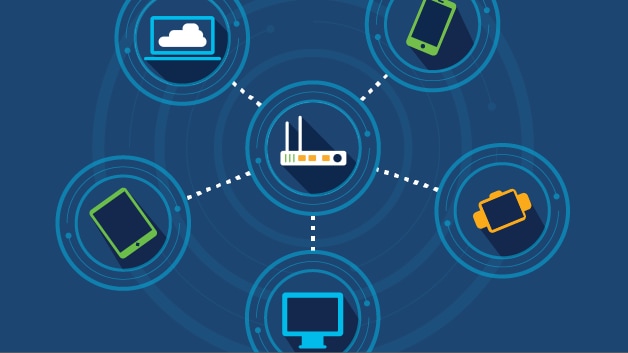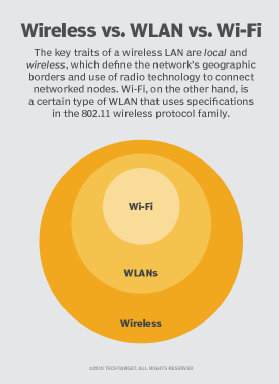Wireless LAN, or WLAN, is a term used to describe a type of local area network (LAN) that uses high-frequency radio waves rather than wires to communicate between devices. This article offers an in-depth overview of what wireless LAN means and its applications.
Wireless LAN Explained
A wireless local-area network (WLAN) is a group of colocated computers or other devices that form a network based on radio transmissions. Unlike wired LANs, WLANs provide users with the flexibility to move around within the coverage area while maintaining network connectivity.

Credit: www.techtarget.com
Understanding the Difference: WLAN Vs. Wi-Fi
It is important to understand the distinction between WLAN and Wi-Fi. A WLAN refers to the network infrastructure, while Wi-Fi specifically deals with the technology that allows users to connect to WLANs wirelessly using radio waves. As a result, Wi-Fi is a type of WLAN.
History and Architecture of Wireless LANs
The concept of wireless LANs dates back to the mid-20th century, and it gained significant traction in the late 1990s with the advent of the IEEE 802.11 standards. These standards have evolved, leading to the development of various wireless network architectures and technologies.
Types Of Wireless Lans
Modern WLANs come in different forms, such as peer-to-peer networks, wireless mesh networks, and infrastructure networks. Each type is designed to fulfill specific requirements, whether it’s for home use, business environments, or public hotspots.
Applications and Benefits
Wireless LANs offer numerous advantages. They enable mobility, flexibility, and cost-effective network deployments. Businesses and organizations use WLANs to provide seamless connectivity, improve productivity, and enhance customer experience.

Credit: www.cisco.com
Key Differences: Wireless LAN Vs. LAN Connection
A LAN connection encompasses both wired and wireless connections, while WLAN connections exclusively utilize wireless means for communication. LANs generally operate within a confined geographic area, whereas WLANs can cover larger physical areas using multiple access points.
Wireless LAN: Speed and Range Comparison
When comparing Wi-Fi and Bluetooth, Wi-Fi typically offers faster data transfer speeds and a wider coverage range. Wi-Fi signals can cover larger areas, making it suitable for home, office, and public settings. In contrast, Bluetooth is designed for shorter-range communication, typically within a few meters.
In Conclusion
Understanding what wireless LAN means is crucial in today’s connected world. The ability to communicate and access resources without physical constraints has revolutionized the way we live and work. As wireless technology continues to evolve, WLANs will play an increasingly vital role in shaping our interconnected future.
Frequently Asked Questions On What Does Wireless Lan Mean
What Is The Difference Between Wi-fi And Wireless Lan?
The main difference between Wi-Fi and Wireless LAN is that Wi-Fi is a type of Wireless LAN technology. Wireless LAN is a network that connects devices using wireless communication within a limited area. On the other hand, Wi-Fi refers to the wireless networking technology that allows devices to connect to a Wireless LAN.
What Does Wireless Lan Do?
A wireless LAN, or WLAN, is a wireless network that connects multiple devices using wireless communication. It creates a local area network within a limited area like a home, school, or office building. WLANs are based on radio transmissions instead of wired connections, and Wi-Fi is one type of WLAN.
What Is The Difference Between Wireless And Lan Connection?
A wireless LAN is a wireless network, connecting devices using wireless communication within a limited area, while LAN includes both wired and wireless connections in a particular location.
Is Wireless Lan The Same As Bluetooth?
A wireless LAN is not the same as Bluetooth. Wireless LAN links devices using wireless communication to create local networks, while Bluetooth is designed for short-range communication.


